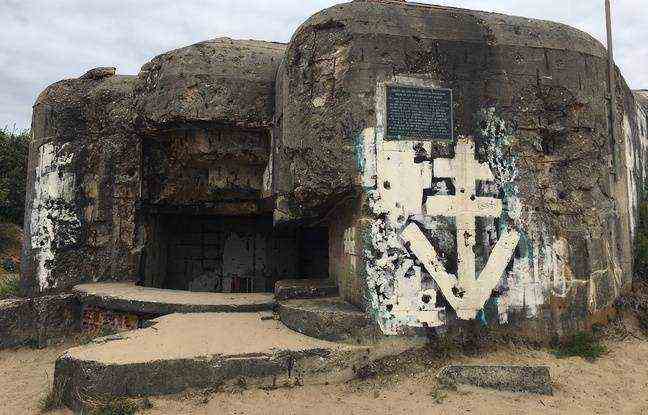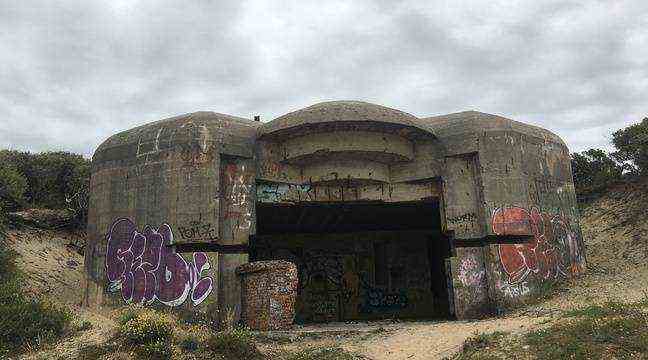Soulac-sur-Mer Atlantic Coast Bunker – Mickaà «l Bosredon / 20Minutes
- For twenty-one years, this Soulacais single-handedly cleared 26 World War II bunkers buried under the dunes of the Atlantic coast.
- He started his business out of a “duty of remembrance” to his father who had been requisitioned to erect this part of the Atlantic Wall.
- Now passionate about “bunker-archeology”, Jean-Paul Lescorce organizes guided tours for tourists.
In twenty-one years, it is a real feat that he has accomplished. “Without noticing it” he slips today. At 84 years old, Jean-Paul Lescorce was decorated a few days ago with the medal of the Order of Merit of the Republic of Germany, for his work of removing sand from 26 bunkers from the Second World War, buried under the dunes. of the Atlantic coast, mainly in the municipality of Soulac-sur-Mer (Gironde), as well as that of Verdon.
Jean-Paul Lescorce was already over 63 years old, in the year 2000, when he undertook his monumental enterprise, armed with his shovel and his trash bags. “The Soulacais took me for a madman, he remembers, they did not understand why I was removing the sand from these” blockhouses “, as they say – when the real term is bunker [béton armé ferraillé]. “
Passionate about “bunker-archeology”
“My idea at the start,” he continues, “was, accompanied by four-five friends, to remove the sand from a single one, to study it. I was the most motivated and after a month I found myself alone. I asked myself whether to continue or not, but I felt that I had a duty to remember, especially to my father who had been requisitioned to build the one I was starting to remove. “

Little by little, he became fascinated by “bunker-archeology” and understood that these enormous concrete blocks worked in pairs, with an attack bunker and another for withdrawal and accommodation. “I then said to myself that I had to desensit at least the one next door. Twenty years and 24 bunkers later, he calculated that he had removed “1,600 m3 of rubble” in total. Because it was not necessary to remove only sand to revive the concrete monuments. “There was broken glass, wood, plastic, scrap metal… And I put all of this in large bins that I took to the recycling center for selective sorting. All alone for twenty years. “A colossal job” underlines the Consul General of Germany in Bordeaux, Verena Gräfin von Roedern, who came to decorate him in Soulac.
“A unique site”
And the octogenarian still has not given up. Not that he wants to engage in the removal of sand from a twenty-seventh bunker, but “we must maintain the existing” he emphasizes, especially with the 3,000 to 4,000 tourists who come to the site each year, via its guided tours.

“There are people who come from far away to see these bunkers”. The Arros battery in Soulac is indeed “one of the largest batteries [issue du Mur de l’Atlantique] still intact on the French coast. “” It is a unique site, even in Normandy there are no such beautiful bunkers, because they were very damaged by the bombardments. “
Another 200 bunkers intact
There were in all, in this triangle of the southern fortress which went from Soulac to the point of Grave, 350 bunkers. There are believed to be around 200 still intact. This fortification is part of the “Atlantic Wall”, carried out between 1941 and 1943 by the German army and requisitioned local construction companies, and which stretched over 4,500 km from the coast of Norway to the Spanish Basque Country. Some 15,000 bunkers in all were erected, in an attempt to prevent an Allied landing.
“At the end of their construction in the fall of 1943, the bunkers were covered with sand, painted an ocher-yellow color with green bands of camouflage in places, and on the sides of the gun casemates the Germans painted with false windows, false curtains, false flowerpots… ”explains Jean-Paul Lescorce, author of several books on the subject. He can thus detail the different forms of bunker that exist, from “cannon casemates placed on the sand” to “semi-buried shelter bunkers” through “command bunkers, completely buried. “
Fears for the future of the site
A historical figure in Gironde, this Soulacais says he saw 4,400 Germans arrive on June 27, 1940 in the Médoc seaside resort. “I was three years old, but I remember it well. They took over the “grand café riche”, which was my birthplace, located in a pedestrian street in Soulac. And the Occupation here went well, he insists. “They had two missions: neutralize the entrance to the Gironde estuary with floating mines, and build this part of the Atlantic Wall. “
After the Liberation of Bordeaux on August 28, 1944, the Germans withdrew to this fortress of Arros, where they surrendered on April 20, 1945. “Immediately afterwards, the French army was there for demining and recovered all the guns, the ammunition… The site was quickly abandoned, then squatted and looted. And some got richer in the dismantling of the Atlantic Wall. “
After having restored part of it, Jean-Paul Lescorce is worried about the future of this heritage. “As it is not a disembarkation place, I fear that the day I stop, it will again become a squat and a garbage dump …”

